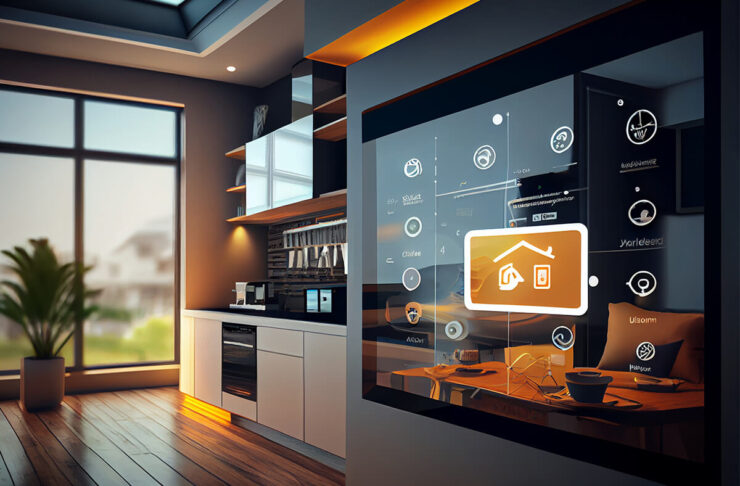In recent years, the idea of home automation has evolved from a futuristic dream into a tangible reality. Homeowners are increasingly embracing smart technologies to enhance convenience, security, and, importantly, energy efficiency.
One prominent advocate for integrating smart home technologies is Meyer Blue, a company renowned for its innovative solutions.
But how exactly can home automation systems make a significant impact on energy conservation?
Let’s take a look into the ways these advanced systems can transform our homes into energy-efficient havens.
Smart Thermostats ─ Precision in Climate Control
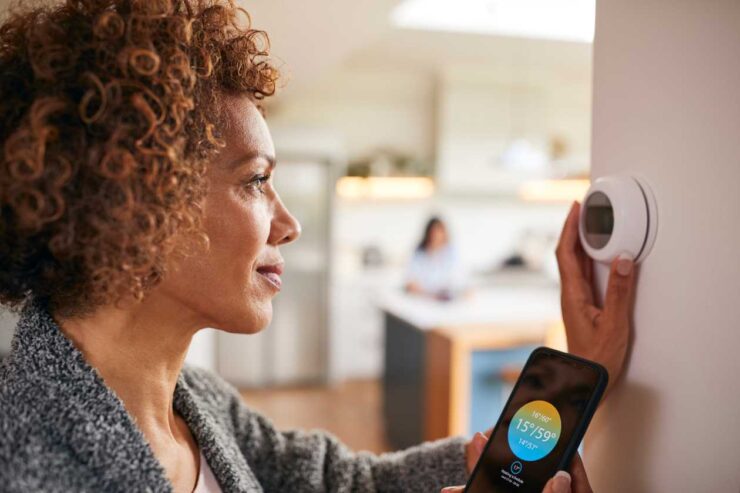
One of the most effective tools for improving energy efficiency in homes is the smart thermostat. Traditional thermostats require manual adjustments and often lack precision, leading to unnecessary energy consumption.
Smart thermostats, however, offer a more sophisticated approach. They learn your daily routines and preferences, adjusting the temperature automatically to ensure comfort while minimizing energy usage. For example, they can lower the heating or cooling when you’re asleep or away from home, and increase it just before you wake up or return. This level of control significantly reduces wasted energy.
Moreover, smart thermostats can be controlled remotely via smartphones or computers. This means you can adjust your home’s temperature settings from anywhere, ensuring that your HVAC system is only running when needed. By optimizing heating and cooling schedules, these devices can lower energy bills and reduce your carbon footprint.
Intelligent Lighting ─ Light Up Only When Needed
Lighting accounts for a substantial portion of household energy consumption. Traditional lighting systems are often left on unnecessarily, consuming energy and increasing costs. Home automation introduces intelligent lighting systems that can drastically cut down on this wastage.
Smart lighting solutions, such as those offered by Meyer Blue, incorporate motion sensors, timers, and remote controls to manage lighting more efficiently.
Motion sensors can turn lights on when someone enters a room and off when the room is unoccupied, ensuring that lights are only used when necessary.
Additionally, automated lighting can be scheduled to turn off during daylight hours or when no one is home. Some advanced systems even adjust the brightness of lights based on the time of day or the amount of natural light available, further optimizing energy use.
Energy Monitoring ─ Real-Time Insights
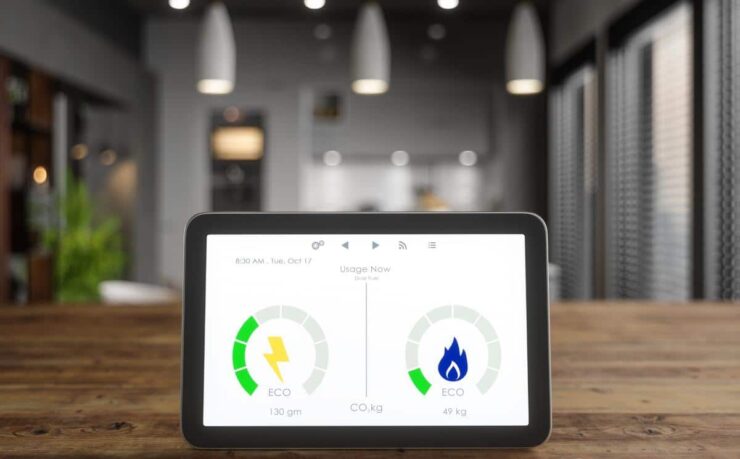
A key aspect of home automation is the ability to monitor energy consumption in real-time. Smart meters and energy monitoring systems provide detailed insights into how much energy each appliance and device in your home is using. This data is invaluable for identifying areas where energy is being wasted and making informed decisions about how to reduce consumption.
For instance, if you notice that your HVAC system is consuming an unusually high amount of energy, you can investigate whether it’s due to a malfunction or if it’s simply time for an upgrade. Similarly, real-time monitoring can reveal the hidden costs of standby power, prompting you to unplug devices that are not in use. By providing a clear picture of energy usage, these systems empower homeowners to take proactive steps toward greater efficiency.
Smart Appliances ─ Efficiency Through Innovation
Modern smart appliances are designed with energy efficiency in mind. From refrigerators and washing machines to dishwashers and ovens, these appliances often come with energy-saving modes and smart features that optimize their operation.
For example, smart refrigerators can adjust their cooling cycles based on the frequency of door openings, while smart washing machines can determine the optimal amount of water and detergent needed for each load.
Additionally, these appliances can be scheduled to operate during off-peak hours when energy demand is lower and rates are cheaper. This not only saves money but also helps balance the load on the grid, contributing to overall energy efficiency.
By integrating smart appliances into your home automation system, you can achieve significant energy savings without compromising on convenience or performance.
Automated Window Treatments ─ Harnessing Natural Light
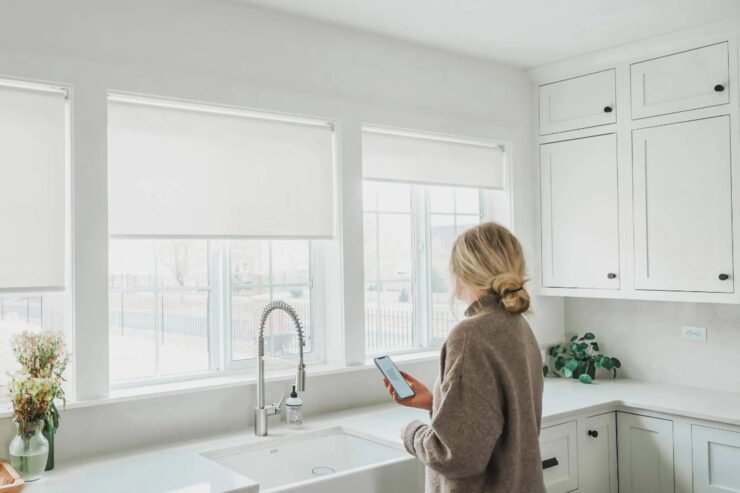
Windows are a critical factor in a home’s energy efficiency. They can be a source of heat loss in the winter and heat gain in the summer, leading to increased energy consumption for heating and cooling. Automated window treatments, such as motorized blinds and shades, can help regulate indoor temperatures by controlling the amount of sunlight that enters your home.
During the summer, automated shades can be programmed to close during the hottest part of the day, reducing the need for air conditioning. In the winter, they can open to allow sunlight to warm your home naturally.
These systems can also be integrated with smart thermostats to create a cohesive climate control strategy, maximizing energy efficiency throughout the year.
Integrated Systems ─ The Power of Connectivity
The true potential of home automation lies in the integration of various systems and devices. When all components of a smart home work together seamlessly, the result is a highly efficient and responsive environment.
For example, a smart thermostat can communicate with smart blinds to adjust temperatures based on sunlight exposure. Similarly, smart lighting can be linked with security systems to provide illumination only when motion is detected.
Platforms like those offered by Meyer Blue facilitate this level of integration, allowing homeowners to create customized automation scenarios that suit their specific needs and preferences. By connecting different devices and systems, home automation ensures that energy is used more efficiently, reducing waste and lowering utility bills.
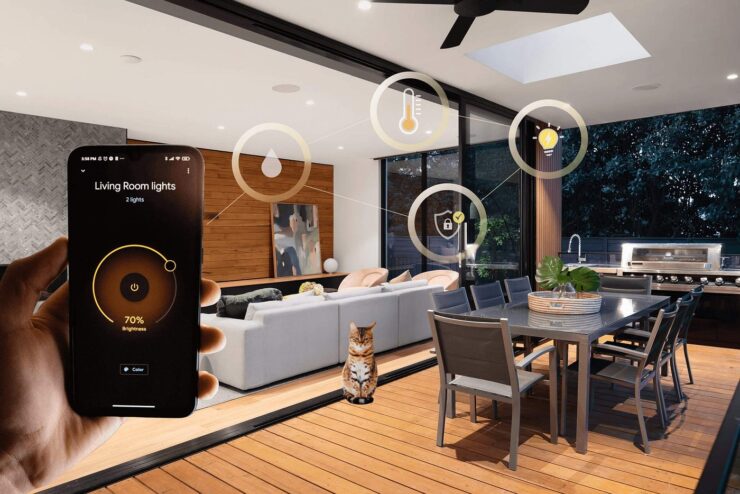
Conclusion ─ Embracing a Smarter, Greener Future
Home automation is not just about convenience and luxury; it’s a powerful tool for achieving greater energy efficiency. By incorporating smart thermostats, intelligent lighting, energy monitoring systems, smart appliances, and automated window treatments, homeowners can significantly reduce their energy consumption and environmental impact.
Companies like Meyer Blue are at the forefront of this technological revolution, providing innovative solutions that make it easier than ever to create a smart, energy-efficient home.
As more people recognize the benefits of home automation, we can expect to see a shift towards smarter, greener living spaces. This transition not only helps individual households save money and reduce their carbon footprints but also contributes to a more sustainable future for all. So, if you’re looking to make your home more energy-efficient, consider embracing the power of home automation and join the movement towards a smarter, greener world.

